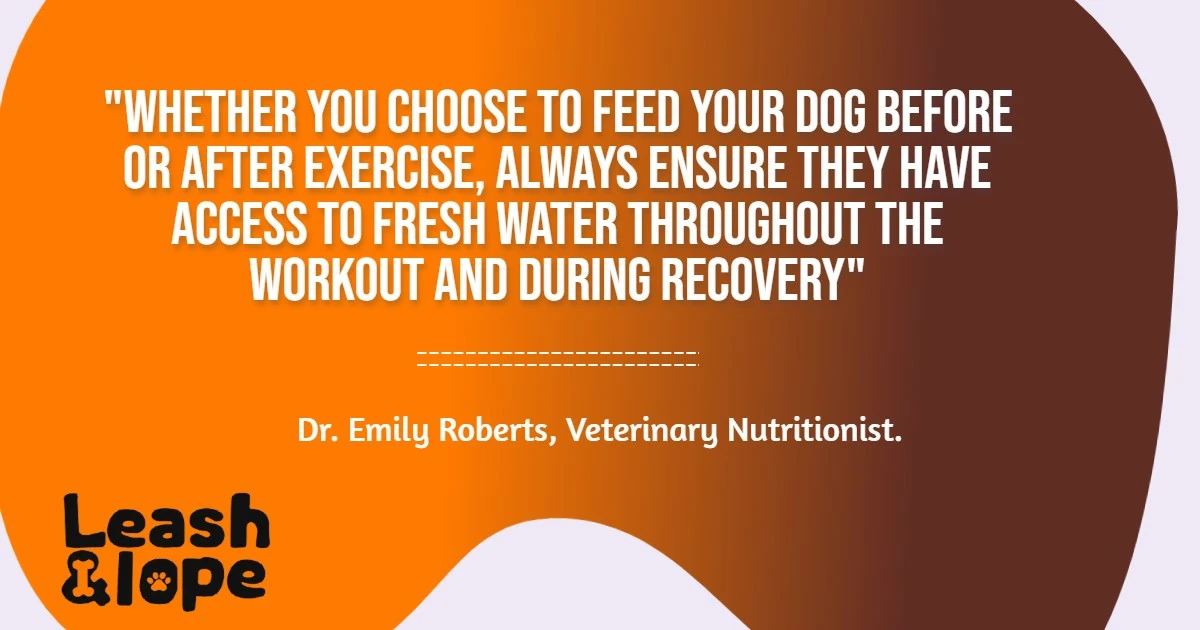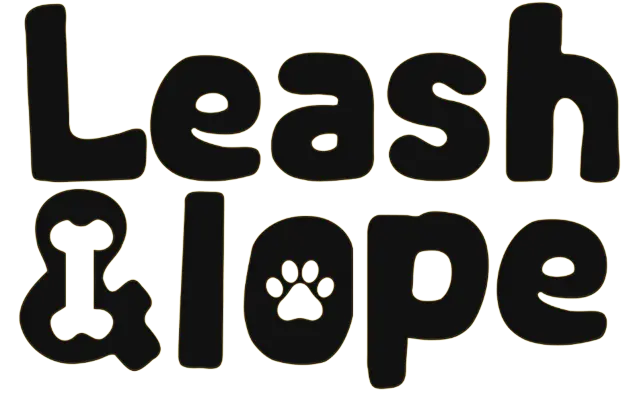Since you’re here to read “Is It Better to Feed a Dog Before or After Exercise”, it’s evident that you have a deep affection for your dog. The process of taking care of the nutritional and physical health of a dog is simple. But, it requires accurate knowledge and the potential effects of the relevant steps taken in this regard.
If we end up taking some wrong steps, we can observe related outcomes that can be fatal for the dog. Conversely, if we take the correct steps, our canine companion can thrive with boundless energy, great health, and a radiant presence.
In this article, we shall explore whether it is better to feed the dogs before or after exercise by combining exercise physiology and nutritional health.

Chapter: 1 Factors Influencing the Feeding Time

It’s important to know that feeding a dog isn’t dependent merely on the timing of exercise. The following factors also play a critical role in influencing this, such as:
- Age: Just like people, dogs’ age matters. Puppies need to eat more often because they are growing quickly, while older dogs might need smaller, more frequent meals.
- Breed: Similarly the age, and the dog’s breed matter. Breeds like Siberian Husky, and Labrador need more food because they’re active. Whereas, Bulldogs and other indoor dogs need less food as they’re more relaxed.
- Individual needs: Each dog is unique, so their diet should match their size, weight, activity level, and health. Some dogs prefer set mealtimes, while others like to nibble throughout the day.
- Type of physical activity: If the exercise is intense, it’s best to wait a bit before or after feeding. But for everyday walks, it’s okay to eat before or after.
- Training sessions: Training with treats? Remember to count those “small treats” in your overall dog’s diet.
- Certain health conditions: Some have health issues like diabetes or allergies, which require special diets or specific feeding times. Your vet can guide you here.
- Behavioral aspects: Some dogs have issues with sharing food, so it’s better to feed them separately.
Before deciding to feed your dog at a specific time, you should always consider the above-mentioned factors.
Chapter: 2 Feeding Before the Exercise

In this section of the article, we’ll see how feeding the dog before exercise can affect its health.
Feeding Too Soon Before Exercise
If you feed your dog too soon before the exercise, it’s not good for its health. We, as humans, tend to become lazy after we eat a meal. It doesn’t happen to us alone, dogs can also experience this. After having a large meal, a dog can become lethargic.
Consequently, they can lose interest in going for a walk. It can also make the dog overweight. By any chance, if the dog goes for a walk, it can cause potential vomiting because its digestive system may not be able to handle the activity. But most importantly, it can result in serious medical complications at times, such as GDV.
Gastric Dilatation and Volvulus
Dogs who are fed immediately before and after the exercise can experience “Gastric Dilatation and Volvulus”, also known as “GDV”.
GDV is a condition that can prove to be life-threatening if it’s not treated urgently.
- It starts with a bloat but later on, the gas-filled stomach twists upon itself, causing subsequent changes in the blood supply which eventually leads to shock. The progression can lead to death.
- The treatment usually requires surgery. However, the mortality rate is approximately 15-20 percent in case the dog hasn’t developed any serious complications and immediate veterinary attention has been sought.
- Statistically, large and deep-chested dogs are at a higher risk of developing this medical condition. It can also be genetic. Anxious and stressed dogs are also at a higher risk of developing GDV. Other risk factors include raised bowls and eating large meals too quickly.
- Symptoms of GDV include a swollen abdomen, excessive drooling, pale gums (due to inadequate blood flow), restlessness, weakness, difficulty in breathing, etc.
Although any dog can develop this disease, it’s particularly common in the following breeds: German Shepherd, Saint Bernard, Irish Setter, Boxer, Rottweiler, Great Dane, Doberman Pinscher, Gordon Setter, Greyhound, Labrador, and Weimaraner.
When Should the Dog be fed Before the Exercise?
To prevent bloating, you should give proper time to the digestion of the food. If your dog just had a snack then you can take it out after about 30 minutes. If it had a full meal then you should wait for about 2-3 hours before walking your dog.
Is it Beneficial to Feed the Dog Before the Exercise?
If you take care of your dog’s feeding time before the exercise, then it is surely beneficial. This is because the energy stored in the dog’s body helps it to perform any strenuous exercise efficiently.
However, if your dog is diabetic, seek veterinary help because just like humans, dogs diagnosed with diabetes need appropriate medical care, sufficient care, and a healthy diet.
Chapter: 3 Feeding after the Exercise

In this section of the article, we’ll uncover how feeding the dog after the exercise affects its overall well-being.
Feeding Just After the Exercise
It is highly discouraged to feed the dog just after the exercise as it can increase the risk of bloating and uncomfortable digestive issues.
When Should the Dog Be Fed After the Exercise?
Walking the dog isn’t a vigorous physical activity, so it doesn’t require a greater rest period before the meal is fed. It is recommended to wait for about 30 minutes before feeding your dog after the walk.
As we know, running is a kind of physical activity that demands more energy and muscle work, so it does require a greater rest period before the meal is fed. This is because it helps their digestive system enter a calm state. This also slows down the heart rate to the normal level. The breathing rate also slows down. It is recommended to wait for about an hour before you feed your dog in this regard.
If the exercise is tougher, you should wait even longer before you feed your dog.
Feeding the dog after appropriate time post-exercise can help prevent the manifestation of “Gastric Dilatation and Volvulus”. It can also help in repairing the micro-tears in muscles. It ensures maximum nutrient absorption as well.
You can give water to your dog but make sure not to give any large meal before the recommended time.
However, if your dog has just woken up after a night’s sleep then you should not directly take it out for a walk. You should give a large meal to your dog, and then wait for the required time. After that, you can take your dog out for physical activity. This would ensure that your dog has sufficient energy to perform well.
Is it Beneficial to Feed the Dog after the Exercise?
Yes, it’s highly beneficial especially if you take good care of the nutritional and physiological needs.
Generally, people prefer feeding their dogs after exercise. This is because research shows that dogs that are in a state of fasting can still perform better during the exercise as compared to those that are fed before the exercise. This is quite complicated in a diabetic dog’s case, hence, consult the veterinarian before you plan on doing this with your dog’s diet.
It doesn’t mean that they should starve their dogs before the exercise. They can give them a small snack so that their blood sugar levels are maintained. It is especially significant in the case of a diabetic dog. Again, make sure that you take crucial veterinarian help in this regard.
Giving proper time for the food to digest, overall gastrointestinal health is ensured.
How to Prevent Bloating?
Since dogs can encounter this regardless of whether they eat before or after the exercise, it’s absolutely necessary to take measures to prevent this.
The most important ways through which you can protect your dog from bloating are:
- Refrain from engaging your dog in intense physical exercises immediately before or after eating the food.
- Since every dog has different individual needs, it’s better to consult with a veterinarian to determine a diet suitable to your dog.
- Feed small and frequent meals to your dog as they help prevent bloating by reduced air intake, no overeating, easier digestion, and stable nutrition absorption.
- Make yourself familiar with the signs of GDV so you can take your pet immediately to the vet and save its life.
- Limit the water intake immediately before and after meals. This is because drinking a large quantity of water along with food can play a major role in the manifestation of bloating.
- Cabbage, processed human foods, spicy foods, etc can also play a role in the development of bloating. Hence, refrain from giving these foods to your dogs to reduce the likelihood of experiencing bloating.
- Encourage your dog to stop overeating and eat at a slower pace.
- Since nervous and anxious dogs are more prone to it, manage the stress levels of your dog by creating a safe and calm environment for them, and also focusing on their socialization. Seek professional help if needed.
- Regular veterinarian checkups can help a great deal when it comes to the prevention of GDV, through early detection and an effective treatment plan.
In Conclusion: Feed the Dog Before or After Exercise
As we wrap up this discussion on whether it’s better to feed your dog before or after exercise, it’s important to remember that there is no one-size-fits-all answer.
While there are valid arguments on both sides. Ultimately, it comes down to understanding your dog’s individual needs and preferences. It’s crucial to consult with your veterinarian and pay attention to your dog’s behavior and overall health.
By understanding their individual requirements, you can make an informed decision that promotes their well-being. Consulting with your veterinarian and observing your dog’s behavior and health can help you make an informed decision.
So go ahead, grab that leash, and enjoy some quality time with your pup!

Dr. Haider is a general doctor with a unique level of connection to our four-legged friends. He is a valued contributor to our Website (Leash and Lope). Dedicated to providing accurate to dog owners in understanding and caring for their lovely pets.

